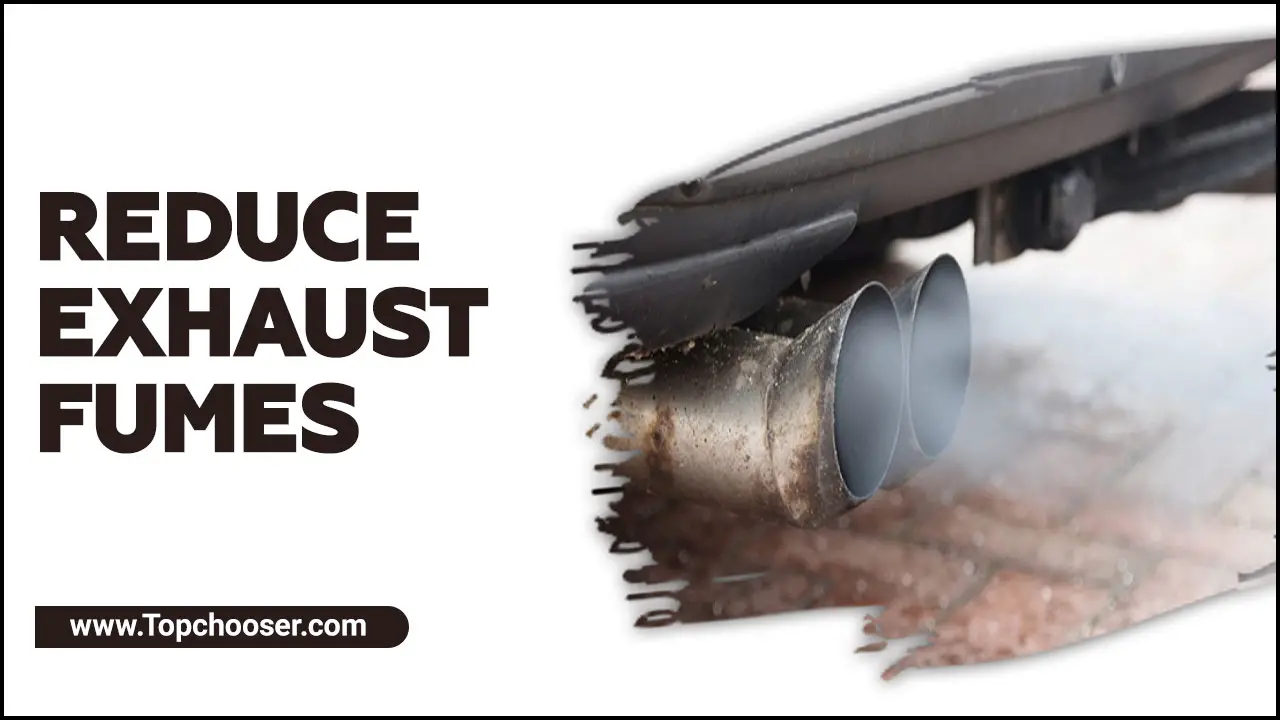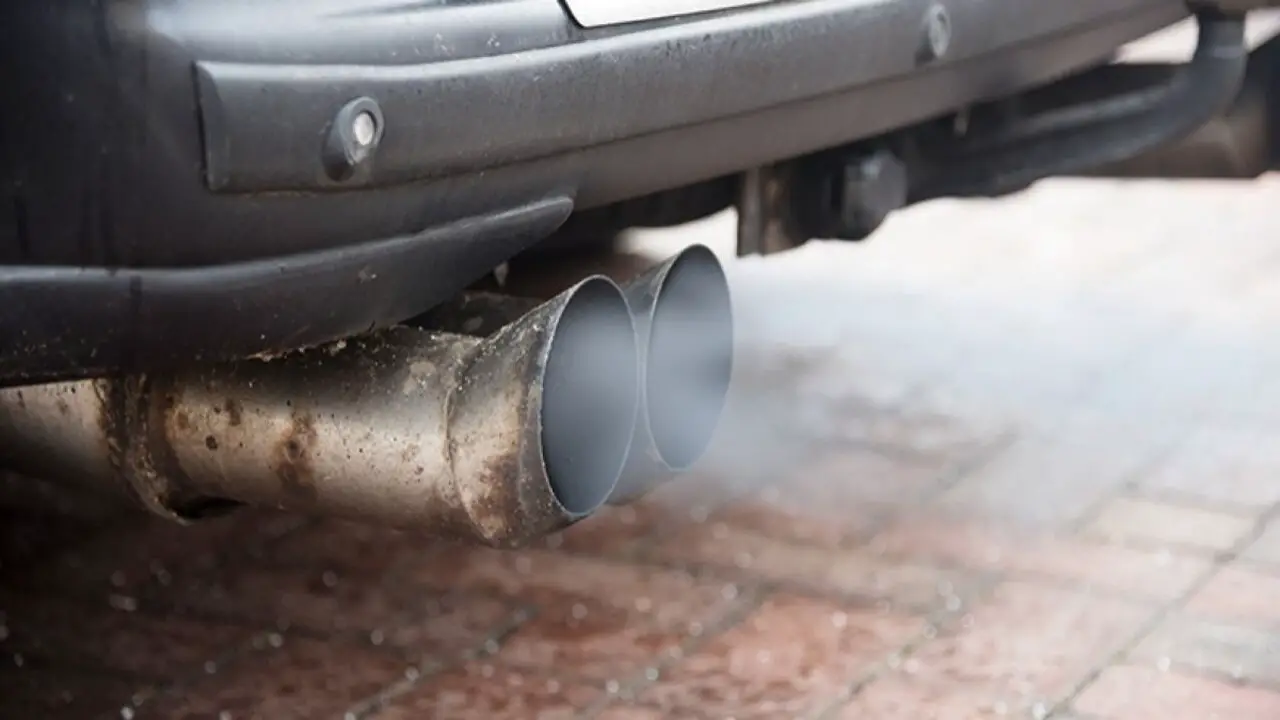Transportation is an essential part of modern society, providing us with the means to travel and commute efficiently. However, the convenience and speed of vehicles come at a cost – exhaust fumes.
These fumes, emitted from vehicle exhaust pipes, contain various chemicals and pollutants that have detrimental effects on both our health and the environment. The combustion process in internal combustion engines produces exhaust fumes that contain harmful gases such as carbon dioxide, which contribute to global warming.
In addition, exhaust leaks can release chemicals directly into the air, further polluting our surroundings. Here, we will explore the effects of vehicle exhaust fumes, the role of internal combustion engines, and how the transition to electric vehicles can help reduce emissions and create a cleaner and healthier environment for all. Scroll down to learn how to reduce exhaust fumes in detail.

How An Exhaust System Works

An exhaust system removes harmful gases and fumes from a car engine. It does this by sucking air into the system, which is heated and pushed out of the car through the tailpipe.
A properly installed exhaust system will reduce emissions significantly, making your car run smoother and emitting fewer pollutants. Many factors affect how much gas an exhaust system can remove – weight, RPMs, altitude, etc. But an exhaust system generally removes harmful gases and fumes from the car engine. So, if you’re looking to reduce exhaust-fumes, it’s important to have one installed and in good working order.
What Is An Exhaust System?
An exhaust system is a series of components used to direct exhaust gases away from a vehicle’s engine. It generally includes an exhaust manifold, catalytic converter, muffler, and tailpipe.
Each system component has a specific purpose and plays an important role in the overall efficiency and performance of the vehicle. The exhaust manifold collects the exhaust gases from the engine’s cylinders and directs them to the catalytic converter.
The catalytic converter reduces the amount of harmful pollutants in the exhaust gases, and the muffler further reduces the noise produced by the engine. The tailpipe is the last component of the system, and it helps to direct the exhaust gases away from the vehicle.
A Step-By-Step Guide To Reduce Exhaust Fumes

Reducing exhaust fumes is important for your health and the environment. One way to do this is by installing a car air filter. This will reduce the number of harmful gases and particles that are released from your car. Additionally, installing an air purifier can be a great option.
Not only will it help to clean the air, but it can also improve the quality of your sleep. To further reduce exhaust fumes, try using activated carbon filters in the ventilation system of your home or office building. Doing so will help trap harmful particles and gases and reduce the number of fumes released. Here are the reduced steps.
1.Change Your Oil And Oil Filter Regularly

Changing your oil and filter regularly is one of the simplest ways you can help reduce pollutants released into the air. In addition, by doing a full inspection before buying a new car, you can avoid purchasing one with polluting engines. Long-distance driving is also a major cause of exhaust fumes, so it’s important to do this routine maintenance at least once every six months on weekdays and once every three months during weekends.
2.Change Your Fuel Filter Regularly

Keeping your car in good working order is important, so regularly change the fuel filter, air filters, spark plugs, and oil. One important step in reducing vehicle exhaust fumes and greenhouse gas emissions from vehicles is to change your fuel filter regularly. The fuel filter helps to remove impurities from the fuel before it reaches the engine, which can improve fuel efficiency and reduce vehicle exhaust emissions.
Over time, the filter can become clogged with dirt and debris, which can restrict the flow of fuel and increase the smell of exhaust gasses. Change your fuel filter according to the manufacturer’s recommendations. You can help ensure that your vehicle is running efficiently and emitting fewer harmful pollutants into the air.
3.Change Your Air Filter Regularly
One of the key steps in reducing exhaust fumes is to change your air filter regularly. The air filter plays a crucial role in ensuring that clean air is flowing into the engine for combustion. Over time, the air filter can become clogged with dirt, dust, and debris, which can restrict airflow and negatively impact the diesel fuel ratio. This can result in poor fuel efficiency and increased emissions.
By changing your air filter regularly, you can ensure that your engine burns fuel more efficiently. Reducing exhaust fumes and promoting cleaner air intake. Additionally, it is also important to maintain other components, such as the fuel injectors. To optimize fuel efficiency further and reduce emissions.
4.Change Your PCV Valve Regularly

A PCV valve is an important part of your car’s exhaust system. It helps to reduce the number of fumes that come out by controlling the flow of exhaust gases. Over time, it can become clogged. That will prevent it from working properly, and your car will emit excess smoke. So, regularly replacing your PCV valve is a great way to keep your car emissions under control.
Drive Smartly
Driving exhaust fumes is harmful not just to the driver but also to those around them. Follow these simple tips, and you’ll be on your way to driving smartly and reducing exhaust fumes emissions! Avoid using the car in urban areas on weekdays.
The fumes from your engine will be especially strong in populated areas, so it’s best to avoid driving your car in these areas during weekday mornings and evenings. This way, you’ll avoid impacting other people negatively and emissions.
Alternative Transportation Options
Reducing exhaust fumes is an important step in promoting a cleaner and healthier environment. One way to achieve this is by exploring alternative transportation options. Electric or hybrid vehicles are becoming increasingly popular as they produce fewer emissions compared to traditional gasoline-powered cars. Utilizing bicycles or walking for short distances can also help reduce exhaust-fumes while providing additional health benefits.
Additionally, considering public transportation or ride-sharing services can help decrease the number of vehicles on the road, further reducing exhaust emissions. By incorporating these alternative transportation options into our daily lives, we can contribute to a cleaner and more sustainable future.
Supporting Eco-Friendly Initiatives
Reducing exhaust fumes is an important step in supporting eco-friendly initiatives. There are several ways to contribute to this cause, such as encouraging local authorities to improve public transportation infrastructure, promoting car emission standards and regulations, and participating in clean air campaigns. By advocating for these initiatives, individuals can help create a more sustainable and healthier environment for everyone.
Additionally, adopting eco-friendly practices like carpooling or using electric vehicles can further reduce exhaust-fumes and minimize their impact on air quality. Individuals must take action and make conscious choices to reduce exhaust-fumes for the benefit of our planet and future generations.
Protecting Yourself From Car Exhaust

Car exhaust fumes contain a variety of harmful pollutants, such as carbon monoxide, nitrogen oxides, and particulate matter, which can have detrimental effects on our respiratory system and overall health. To minimize exposure and reduce the impact of car exhaust fumes, consider the following bullet points:
- Keep windows shut during high-traffic times
- Install carbon monoxide detectors
- Use a high-quality air purifier
- Have plants around the home
Best Practices For Limiting Exposure To Diesel Exhaust
When limiting exposure to diesel exhaust, organizations must prioritize the health and safety of their employees and the environment. Implementing best practices not only reduces the harmful effects of exhaust fumes but also demonstrates a commitment to responsible operations. Here are some key strategies to consider:
- Turn off engines when not in use
- Never run vehicles indoors
- Use good ventilation
- Suggestions for management
How To Fix Your Car’s Exhaust Emissions

Reducing exhaust fumes is crucial for the environment as well as our health. Car emissions are a major source of greenhouse gases and air pollution. Here is a step-by-step guide to help you fix your car’s exhaust emissions. By following these steps, you can help minimize your car’s contribution to air pollution and greenhouse gas emissions, making a positive impact on the environment and our overall air quality.
- Regular maintenance
- Check the catalytic converter
- Replace worn-out parts
- Use the right fuel
- Drive smart
What Causes Dirty Emissions?

Dirty emissions, specifically exhaust fumes, are caused by several factors related to the combustion process in an engine. When fuel is burned in the combustion chambers of an engine, it produces heat and energy to power the vehicle. However, this process also creates harmful byproducts, including carbon monoxide, nitrogen oxides, and particulate matter.
These emissions are released into the air through the vehicle’s exhaust system and can have detrimental effects on both human health and the environment. It is important to reduce these emissions by maintaining proper engine performance, controlling temperature levels, and using cleaner fuels or technologies to minimize the health hazards associated with dirty emissions.
What Makes Car Exhaust So Dangerous?
Car exhaust fumes can be incredibly dangerous due to the presence of harmful pollutants. The primary pollutant found in car exhaust is carbon monoxide, which is a colourless and odourless gas that can be lethal when inhaled in high concentrations. Carbon monoxide binds to haemoglobin in the blood, reducing its ability to carry oxygen throughout the body.
This can lead to symptoms such as dizziness, headaches, and even loss of consciousness. In addition to carbon monoxide, car exhaust also contains nitrogen oxides, particulate matter, and volatile organic compounds, all of which can contribute to respiratory issues, cardiovascular problems, and even cancer. It is crucial to take steps to reduce car exhaust emissions in order to protect both our health and the environment.
What Are The Health Risks Associated With Excessive Exhaust Fumes Exposure?

Excessive exposure to exhaust fumes can pose serious health risks. Inhalation of these fumes can lead to respiratory issues such as coughing, wheezing, and shortness of breath. Prolonged exposure may also increase the risk of developing chronic respiratory conditions such as asthma and bronchitis.
Additionally, exhaust fumes contain harmful pollutants such as carbon monoxide and nitrogen oxides, which can have detrimental effects on cardiovascular health. These pollutants can contribute to the formation of smog and air pollution, further exacerbating respiratory problems. It is important to reduce exposure to exhaust fumes by avoiding congested traffic areas and ensuring proper ventilation in indoor spaces.
Conclusion
Exhaust fumes contain dangerous pollutants that harm the environment and human health. There are several ways to reduce exhaust fumes, both indoors and outdoors. Improve air quality by keeping windows closed during heavy traffic, installing carbon monoxide detectors, using air purifiers, and having plants around your home.
You can also opt for eco-friendly alternatives like electric and hybrid cars or bicycles and walking for shorter distances. Reducing exhaust fumes is important for both your health and the environment. By understanding how to reduce exhaust-fumes, how the exhaust system works, and how to install and use an exhaust system properly, you can help reduce harmful air pollution.
Frequently Asked Questions
[rank_math_rich_snippet id=”s-956fcd88-b38d-4015-abc4-762790ece34e”]

I am passionate about home engineering. I specialize in designing, installing, and maintaining heating, ventilation, and air conditioning systems. My goal is to help people stay comfortable in their homes all year long.








